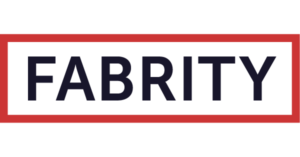Angular and React are two prominent web development tools, typically called frameworks, for building user interfaces and dynamic web applications. There are significant differences between the two: while React and Angular both involve JavaScript, they have quite different features and uses. In this article, I will explain each tool and the differences between them.
Two important definitions first:
A JavaScript library is a set of code snippets, arranged according to function, where web developers can find the snippets they need for the code they are writing.
In a structural framework, you should follow the rule set of that framework. There are also ready-to-use components, e.g., you do not have to write your own function for HTTP requests—you can use a built-in function instead.
What is React?
React is a JavaScript library that, because of its intended and common use in web development, is often considered a framework. It was developed at Meta (of course, then still known as Facebook) to help the social media site handle the complexity of the myriad of element changes and was first used for the Facebook News Feed in 2011. Hence the name React, referring to the declarative programming paradigm known as Reactive programming that allows it to implement posts and edits from many thousands of users at once.
The company open-sourced React in 2013. The latest version, React 18, was released in June 2022.
React has historically used JavaScript ES6+. It includes the JSX syntax extension that allows the use of markup language similar to HTML, so it is easier to understand and debug. However, TypeScript can now be used as well.
As you might expect, the three big Meta companies (i.e., Facebook, Instagram, and WhatsApp) make use of React (not to mention Threads). Netflix, Discord, Dropbox, and… X are on that list as well.
What is Angular?
Angular is a structural framework. It was developed by Google (today Alphabet), starting with the first release—AngularJS—in 2010. However, that version is deprecated (and not supported since January 2022), having been replaced by a complete rewrite that they called Angular2 in September 2016. The current version, referred to as either Angular2+ or just Angular, is version 16.
While the original, as you might guess, used JavaScript, Angular uses TypeScript, a programming language which is a JavaScript wrapper. In TypeScript, optional static typing is available, allowing you to define the type of variable. This prevents users from giving incorrect input data as a variable (e.g., text instead of numbers).
Early versions of Angular had a model-view-controller (MVC) pattern of architecture. Perhaps due to the influence of React, Angular has moved toward a component-based architecture.
As for companies that use Angular, there are more than Google itself. Microsoft, IBM, Samsung, and Rockstar Games are just a few of the biggest names making use of this framework.
Read more on Web development:
Headless CMS vs. traditional CMS—comparison
A web application security checklist for every stage of development
Micro frontends: pros and cons
Progressive web apps (PWA)—a gentle introduction
React best practices for web development
React vs React native—which one is better for your business
Does it make sense to compare React and Angular?
Since React is not a framework but a library that some call a framework, and Angular is indeed a full-fledged framework, perhaps the comparison is rather like apples and oranges. However, just as apples and oranges are both tart and high in vitamin C, both Reach and Angular are powerful tools for application development, particularly suited for creating the user interface for cross-platform mobile apps.
Angular vs. React: similarities
JavaScript, originally created by Netscape, is almost as old as the Web itself. Along with HTML and CSS, JavaScript has been an important tool in online architecture. So, it is no surprise that React and Angular are JavaScript-based tools that can be used to solve similar problems in software development.
Other similarities are as follows.
Both are open source
As you might expect, there are large developer communities continually adding resources such as tools and libraries for both React and Angular. Your developers will not be limited by tech or community support, only by your specifications.
Protection
Being JavaScript-based does pose a security issue, so both tools have XSS (cross-site scripting) protection.
Rendering
Angular and React offer efficient client-side and server-side rendering (CSR and SSR respectively). SSR in React, however, is only available with Node.js server (e.g., Express) or Next.js library (which is based on React). In Angular, SSR is supported through its Angular Universal package.
Easy to update
React depends on external libraries, and Angular uses CLI, both of which reduce the complexity of updating. You need to bear in mind, however, that these external libraries in React do not always get updates in a timely manner. Also, you can add external libraries in Angular too.
Architecture
A component is one item—a login pop-up, a password field, or a login button, to name a few—of a user interface. Both frameworks have a component-based architecture, allowing the use of components in other components. Also, in both cases it is considered best practice to create small (atomic), reusable components (e.g., styled input) and to build other components from atomic parts.
Permission-seeking classes
Both tools have a method to allow dependency injection. Angular’s is built in, while React makes use of the JSX extension.
Strong types
These make it easier to catch potential issues during development. React’s built-in PropTypes, a type-checking mechanism, lets developers define the types and structures of parameters. Strong types are also a natural feature in Angular because of its TypeScript base.
Angular vs. React: differences
Many of the differences between React and Angular are due to the fact that only one is a framework. As you might imagine, though, their similar purposes mean that Alphabet and Meta have each sought to plug the gaps, finding ways to add features that the other has always had.
Popularity
This graph from Stack Overflow shows how React kept gaining popularity fairly steadily as a search term on the site, while Angular has rather leveled off.
In terms of percentages, builtwith.com said (in July 2023) that React is used for 14.3% of the top million websites and 41% of the top ten thousand. Angular, on the other hand, is reported to be represented in just 1.1% of the top million and 5.2% of the top ten thousand.
Being one of the most popular frameworks for web development (only Node.js has bigger numbers), React has a huge community behind it. Developers can get help to resolve issues faster from community members offering ready-made solutions to most problems developers may encounter.
Structure
Being a library means that React has a light structure—that is, there is relatively little code to know and write. It is smaller (6.4 kB for the minimum library), quicker to learn, and quicker to implement for the first time. Its small size also means that there are functions you may want that will require additional libraries… and React allows that. These can include React Router, Redux, and Helmet for optimizing state management, routing, and API interactions; other libraries and modules will be needed for UI elements, data binding, form validation, and others.
Angular, on the other hand, is a complete framework that was developed to save time, in the sense that many more of the final design options are pre-determined. Indeed, there are UI elements, such as buttons, layouts, pop-ups, and more, that are provided in the Angular Materials library. This, plus the many other libraries in the framework, does mean that developers need a lot more time at the beginning in order to learn the code and to learn about the available resources. That “everything is provided” also means that there are no outside options available.
It is also important to note, however, that in Angular you must use class-based components. In React, on the other hand, you can use class-based components (mostly used before Hooks in React 16.8), function components (very useful with Hooks), or both in same project.
Learning curve
It will come as no surprise, given the structural framework vs. JavaScript library form of these two, that React has the quicker learning curve out of the box, though the vast number of available libraries may never be mastered by anyone. Angular, meanwhile, will take more time to learn, but once a developer does learn it, there are only updates that require further learning.
Time
Of more concern to you, perhaps, is whether more time is necessary for a first-time build. The smaller size of React effectively means that third-party libraries will need to be found, chosen, and implemented. It is once that first build is complete that you will realize the time and cost savings, since all of the necessary components are already in place for later expansion and refinement… assuming the development team remains the same and is not replaced with an entirely new team with different library preferences. The complete Angular framework would win in this case simply due to the limits provided by its baked-in choices.
Document object modeling
Another reason React is small is because it does not deal with a document object model (DOM) directly. Instead, it uses virtual DOM. As a result, a small change in one element’s data does not have to be updated throughout the data structure tree in real time. It might look to the user as if the entire page gets rendered again with each change, but in fact only the HTML tree is replaced and only subcomponents are rerendered. This may be termed a downward data flow or unidirectional data flow—a much faster process. Virtual DOM improves how well apps and UX perform when accessed often.
Angular, meanwhile, uses real DOM. That is to say, any change made to data is sent everywhere it is needed within the framework, from parent components to child components. In other words, Angular does two-way data binding. Your users, especially those with older computers and slower Internet connections, will notice the slower runtime performance, especially if the data bounces around to some components multiple times (which is more likely the larger the app). There are “state management” libraries to help with this issue, however, and there is a change detection function built in. This is because Angular uses model-view-controller (MVC) architecture.
Debugging
Meta provides a set of browser extensions and developer tools for debugging in React. Developers can examine component hierarchies and track component updates, allowing them to identify issues and understand an application’s behavior. Plus, React’s error messages and warnings provide meaningful information of which component is the source of the error. Angular, on the other hand, has one tool that serves for all of the debugging that might be necessary, and it comes bundled with the framework.
Overall development cost
The reusability of React components in React saves developers time by eliminating the time spent rewriting code for each place a component is needed. Parts of the app can be on both the client side and on the server, ready when needed but not in active memory. Angular’s cost savings come as a result of its cross-platform capabilities, such that little if any modification is needed to adapt from a PC screen to a mobile one. Also, as mentioned earlier, the heavy weight of this framework is because so many UI components are already provided—no need to spend time searching for the desired library.
Speed and performance
Angular, known for its high speed and performance, has the power to handle complex operations and large data volumes. Yet React is known for its SEO-friendliness in loading pages with its fast rendering. That helps a business website rank higher on Google SERPs, and bounce rates are lower.
However, when it comes to meta tags (invisible tags providing data about your page to search engines and web visitors like title, meta description, headers, or canonical tag), you need to use external libraries to handle them. These libraries might not always be up to date, which can be challenging to sort out.
Scalability
Angular can be used for apps of any size, so unexpected user growth and sudden traffic spikes are easier to handle. That is not to say that React is not scalable. Here again, the reusability of code/components is an advantage, making it easier to manage, manipulate, and copy them.
High-quality
The advantage of Angular’s provided structure is in terms of quality. The community has an incentive to keep the components, which are smaller in number, up to date and bug-free. The result is that Angular results in high-quality apps. A seamless user experience is practically guaranteed.
Bundle size
It is a bundle file that must initially be downloaded when a user starts using a web app. Since size matters when it comes to web page loading time (and hence waiting time), optimization matters to you/your client.
An Angular application must use a compilation process so that the browser can understand the application’s UI components and templates. Naturally, this process will be longer for larger bundle files. To meet this challenge, switch to production mode from the command line interface. This activates ahead-of-time (AOT) rendering to convert the Angular HTML and TypeScript code into the efficient JavaScript code that the browser will download and run.
To manage the bundle file size issue in React, you will need code-splitting and compression. Otherwise, the code analysis process could get out of hand as your app gets larger, especially if you add new pages and features constantly. To solve this problem, you need to use appropriate bundler settings. You can either put the entire app into one JavaScript file or use a lazy-loading feature where JavaScript files are downloaded when needed.
Angular vs. React: upgrading and testing
There seem to be differences of opinion when it comes to how easy it is to upgrade Angular and React. Both Alphabet and Meta put effort into updating and improving their respective frameworks, and you will need to be certain your site does not get broken in the process. Is Angular easier to update because it is a full framework that will all be updated at once? Currently, Meta will not risk releasing an unstable version of React, because of the high-profile clients who use it. However, the various libraries available may not all get compatibility updates at the same time.
You will also come across information about differences when it comes to testing. You might read, for instance, that React developers do their testing with separate tools for components, for the JavaScript code, and for the units. In comparison, Angular is said to lend itself to full testing with just the one tool mentioned earlier. If you think about it, though, the number of tools used does not translate into any differences in the time required for testing—everything will be tested, by one tool or many, and there are plenty of React-related tools to choose from.
When to use each: React vs. Angular
So, what do the differences mean when it actually comes to making a choice? Below, I have listed some helpful use cases for choosing React or choosing Angular.
Let us start with React:
- The app needs to deal with multiple events—things like an animation, a user’s click, a timer reaching zero, and so on. Since React distributes event handling and does not update the real DOM, your app can handle simultaneous events more easily.
- You need a personalized app solution. That is, as far as you and your developer are aware, there are no other websites featuring the functions your solution will require. Angular provides everything—or nearly everything—to meet the most common needs, while React allows developers to seek just the right additional libraries for your individually tailored solution.
- Your solution will involve shareable components. Whether data will be shared just within the app itself, with other apps, or with subcontractors, React plays more nicely than Angular.
Angular’s use cases involve the following:
- You want ready-to-use solutions. You are probably not a disruptor in your field, so what works for and already serves other businesses well will serve your needs just as well.
- You want to reach your business goals as soon as possible. As mentioned above, the elements and other UI components provided by the Angular framework eliminate the time required to find and choose libraries.
- Your requirements are for an app that is large in scale and rich in features. Your users will, you hope, spend a long time using your site, moving through a number of different possible activities.
- You expect to add many adjacent products. Angular easily supports projects requiring scalability and maintainability, so if you already see ways to grow beyond your initial scope, consider this framework.
The UI should not be especially complex. Of course, React can do simple UIs, but Angular will not be your choice if you have lots of elements in the UI of your single-page application.
How to choose the tech stack for your project
To choose any tech stack, developers consider a number of different factors. Lightweight? Easy to use? That is React. Feature-rich and highly structured for quick development? That is Angular.
But when it comes to choosing Angular vs. React, project requirements and use cases are not so helpful. Instead, these are the factors you will want to consider:
What stage is your business at? Start-ups especially should start with an MVP (minimum viable product). This will help clarify your vision, and of course provide you with something to bring to trade fairs and to show potential investors.
Is time-to-market more important than other considerations? A faster development process may mean lower cost outlay before the profits come in, but of course you will need to be sure that you are not trapping your app in the wrong tech stack.
The amount of time depends on:
- How easy it is to hire people with that experience.
- How easy it is to get support.
both of which depend on how big the community is…
…and as mentioned, Angular has the smaller community.
You should also consider the costs of maintenance and further development. You will want to be sure your funding and, hopefully, revenue can cover those costs.
Finally, the most important factor is actually just which tool your team is most experienced with. Their creativity and problem solving, potentially locked up if they are working with unfamiliar tools, will be a much greater factor in the success of your project than the various differences between the two.
- Developers new to React will have to search for libraries.
- Developers new to Angular will have a lot of documentation to read.
But both Angular and React are simply great tools that will get the job done.
As for the requirements of the project? They are important when you need to describe them to your developers. Be as clear as you can when it comes to business objectives and project goals. Help your developers help you!
Final thoughts
Hopefully, this post has given you some useful information to help you with your React vs. Angular decision and to find a solution that will suit the needs of your particular business. The most appropriate tool and a professional team of developers will significantly improve your project’s chances of success.
This article was originally published September 29, 2021, and updated August 4, 2023.











